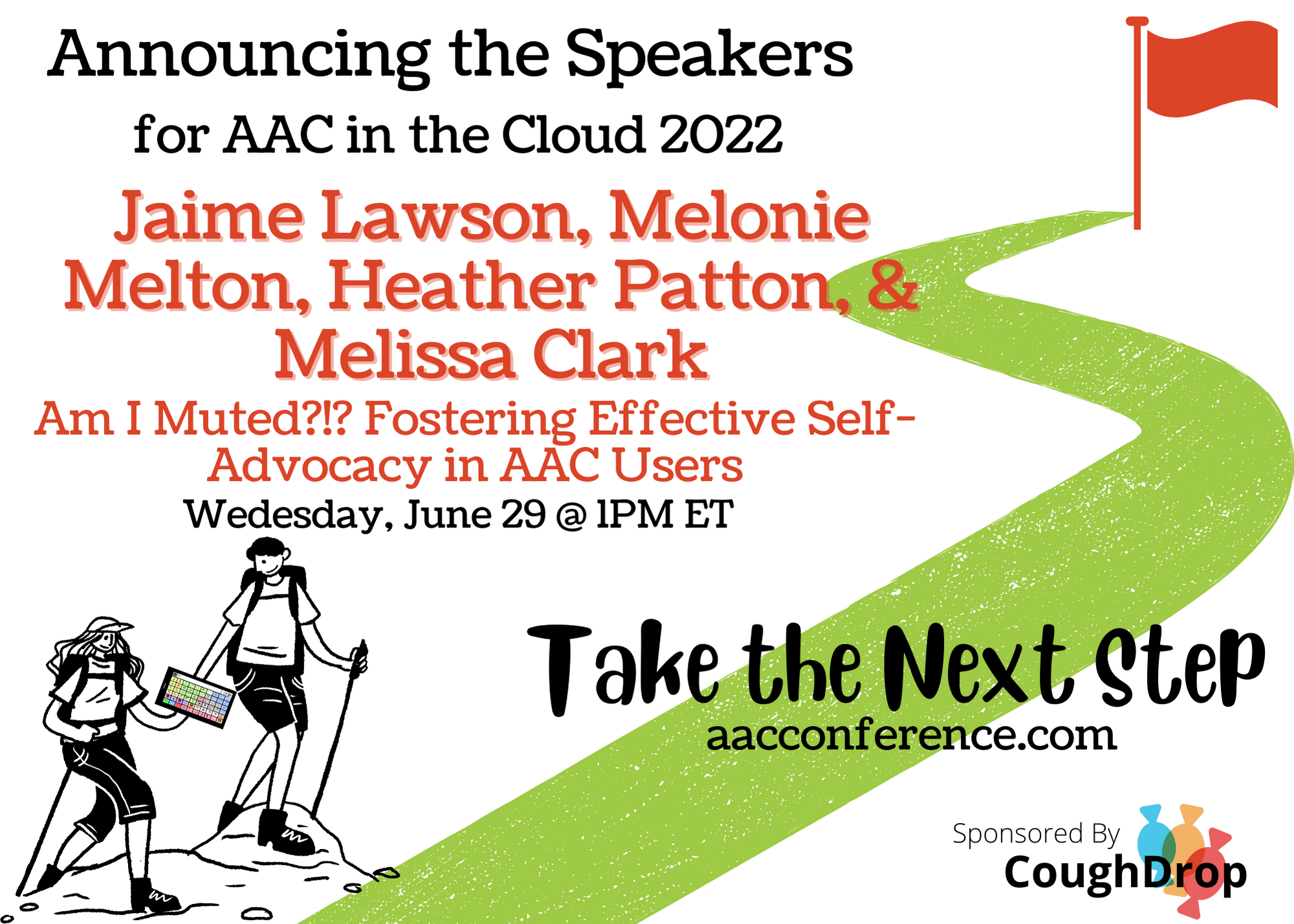Am I Muted?!? Effective Self-Advocacy in AAC Users
How can we best promote self-advocacy for our students with complex communication needs, using augmentative and alternative communication?
Melonie Melton, Heather Patton, Jaime Lawson, and Melissa Clark work together to serve students, aged five to 22, in a regional public day program for six surrounding school districts.
While modifying the lens that we were looking through when working with their students, we realized there was a missing element. That missing element was a shift to include more work on psychosocial competence. Psychosocial competency is the often neglected fifth part of Janice Lights’s Communicative Competence and targets self-advocacy!
With this shift, steps were made to build the confidence, motivation, attitudes, and resilience of students. The five components focused on to strengthen self-advocacy and self-determination within their program included: access to robust communication, student choices and opinions, communication partner training, connection to role models, and social-emotional language development. Let’s take a look at how it all happened!
Access to robust communication
In order to ensure that our students can self-advocate, we must begin with an adequate foundation for communication. Such a foundation requires access to a robust communication system. All students must have access to multimodal communication which incorporates core vocabulary, fringe vocabulary, pre-stored messages, word forms and the letters of the alphabet (Beukelman & Mirenda, 2013). Once these components are accessible to all students, we can turn our focus to literacy and staff education.
It is critical to build staff knowledge and comfort with addressing literacy, which includes both reading and writing. One way of doing so is by reviewing the Project Core modules, which address all the components of literacy.
Another method may include the speech-language pathologist leading lessons, demonstrating how literacy can be incorporated into all instruction across the school day.
Once staff have an understanding of how to address writing for students with complex communication needs, we can then turn our attention to finding ways for all students to participate. This may include various writing utensils, adapted keyboards, device keyboards or alternative pencils. If our students can spell and write, they can say anything they want without limitations. That is our ultimate goal.
Student choices and opinions
It all boils down to being rooted in the Communication Bill of Rights.
We want to make sure we are prioritizing these rights when looking through the lens of self-advocacy. As part of their circle of communication partners, we want to model self-advocacy to our students, such as when we advocate for ourselves and work as team-players with all stakeholders.
Further, we want to make sure that our students are proficient in all of their modes of communication and that all of those modes are respected and honored equally.
In order for our students to make choices and express opinions, we make sure they have a solid understanding of their own self-awareness, their likes and dislikes, strengths and weaknesses, and their diagnosis/es. It is important to acknowledge and honor all communicative attempts our students make, keeping in mind we do not always have to comply.
(The Language Lady, 2020)
It shows that we respect their communicative attempts and opens up an opportunity to have a conversation about why he/she made that choice and understand the ‘why’ behind it.
Communication partner training
Making communication partner training a part of every treatment session has been key in supporting our stakeholders and our students in learning self-advocacy strategies. We have been able to offer structured opportunities to our communication partners by giving weekly self-advocacy ideas related to the Communication Bill of Rights during our group sessions.
Using the push-in model during group and individual sessions also allows us to look for natural opportunities to model self-advocacy skills in front of staff along with ways to differentiate the self-advocacy needs of our students with complex communication needs.
We also offer monthly communication partner training opportunities with our focus on self-advocacy via the use of Nearpod. We have found Nearpod to be valuable in that it allows us to receive feedback from our communication partners about what felt easy or hard in implementing self-advocacy strategies that month. The feedback helps guide our training for upcoming sessions.
We find that keeping the Nearpod training to five minutes and offering prizes increases participation.
Connection to role models
Confidence and motivation can be built by exposing staff, families, and students themselves to successful AAC users. YouTube videos, social media, streaming, and documentaries provide easy access to these role models and can be built into sessions as well as communication partner training.
Social-emotional language development
Presuming competence enough to expose students to a wide variety of emotional vocabulary words allows students to work towards more concisely self-advocating in crisis situations. There are many more emotions than “happy”, “sad”, and “mad”! Commercially available programs such as Kimochis provide an organized way to do this.
Shifting our focus to helping our students develop the confidence, motivation, and resilience needed to become effective self-advocates has improved our outcomes at all levels. It has been a natural tool to help us move past just working on requesting and towards the inclusion of a larger variety of communicative functions, such as expressing opinions and emotions, protesting, and making choices. These language functions are much more valuable in the lives of our students! As a whole, it has provided us with opportunities to speak up for our students within our school community…maintaining that focus of psychosocial competence!
Get a more in-depth look at this topic in our AAC in the Cloud presentation from June of 2022. Find it here:

